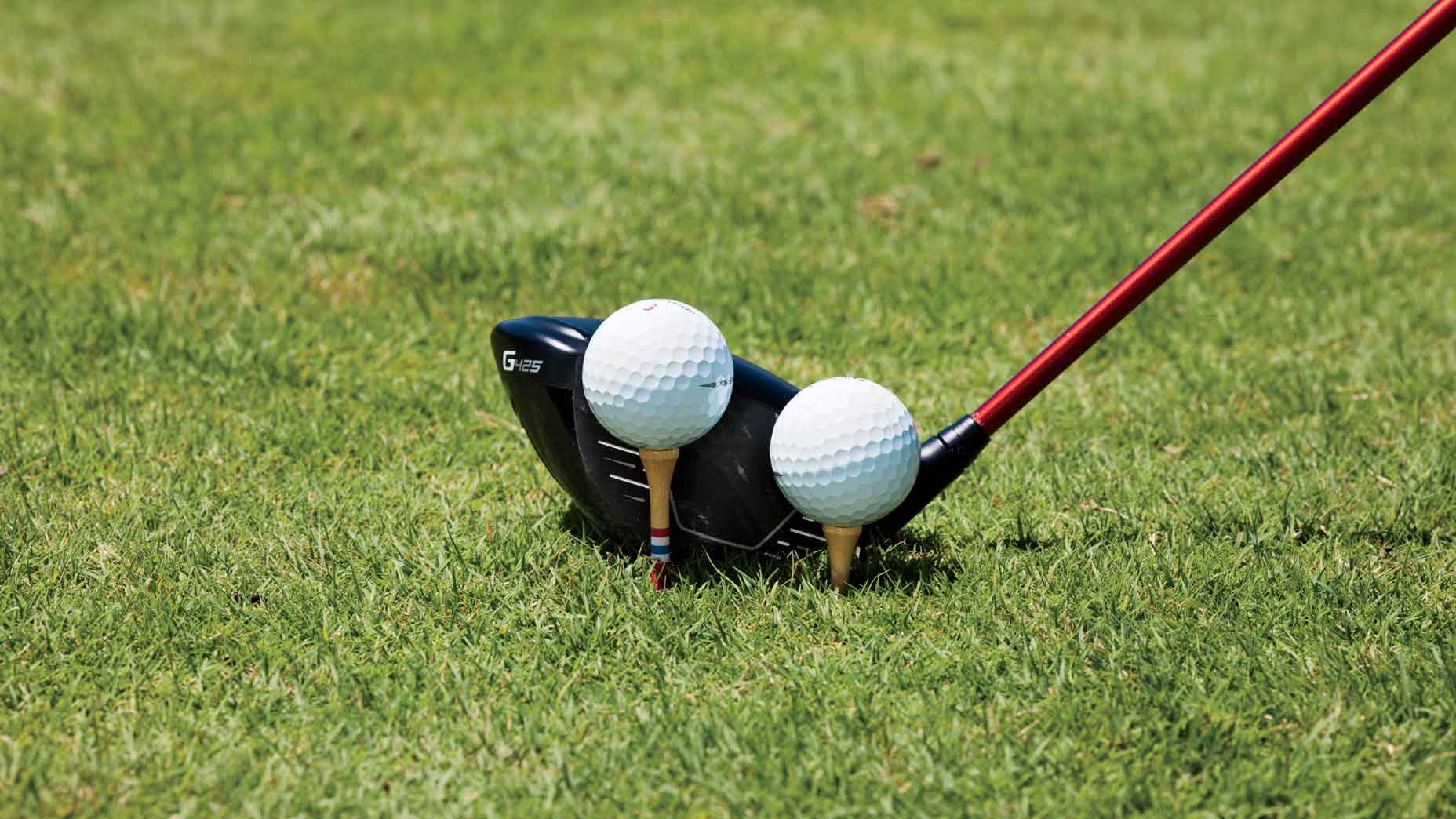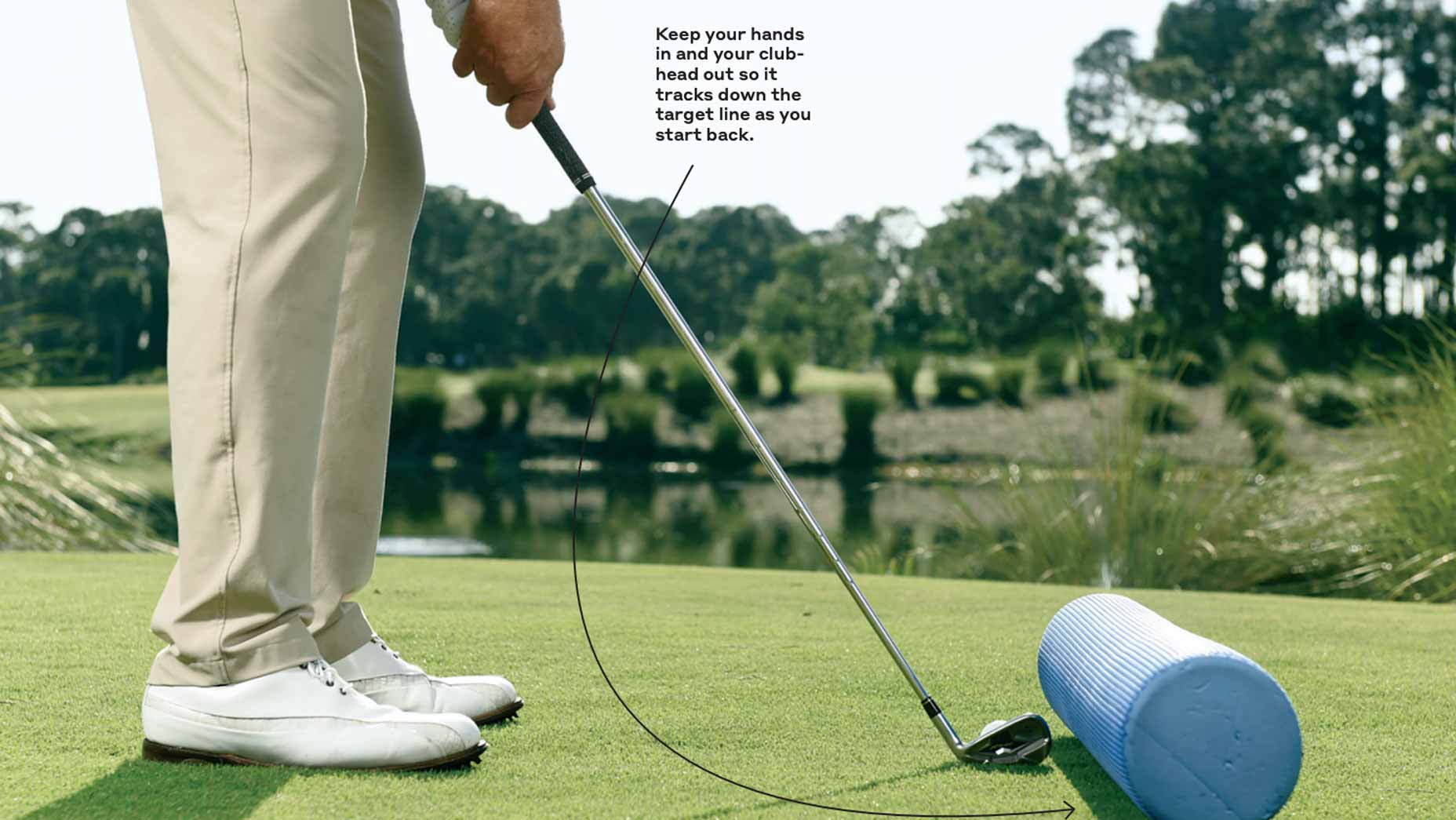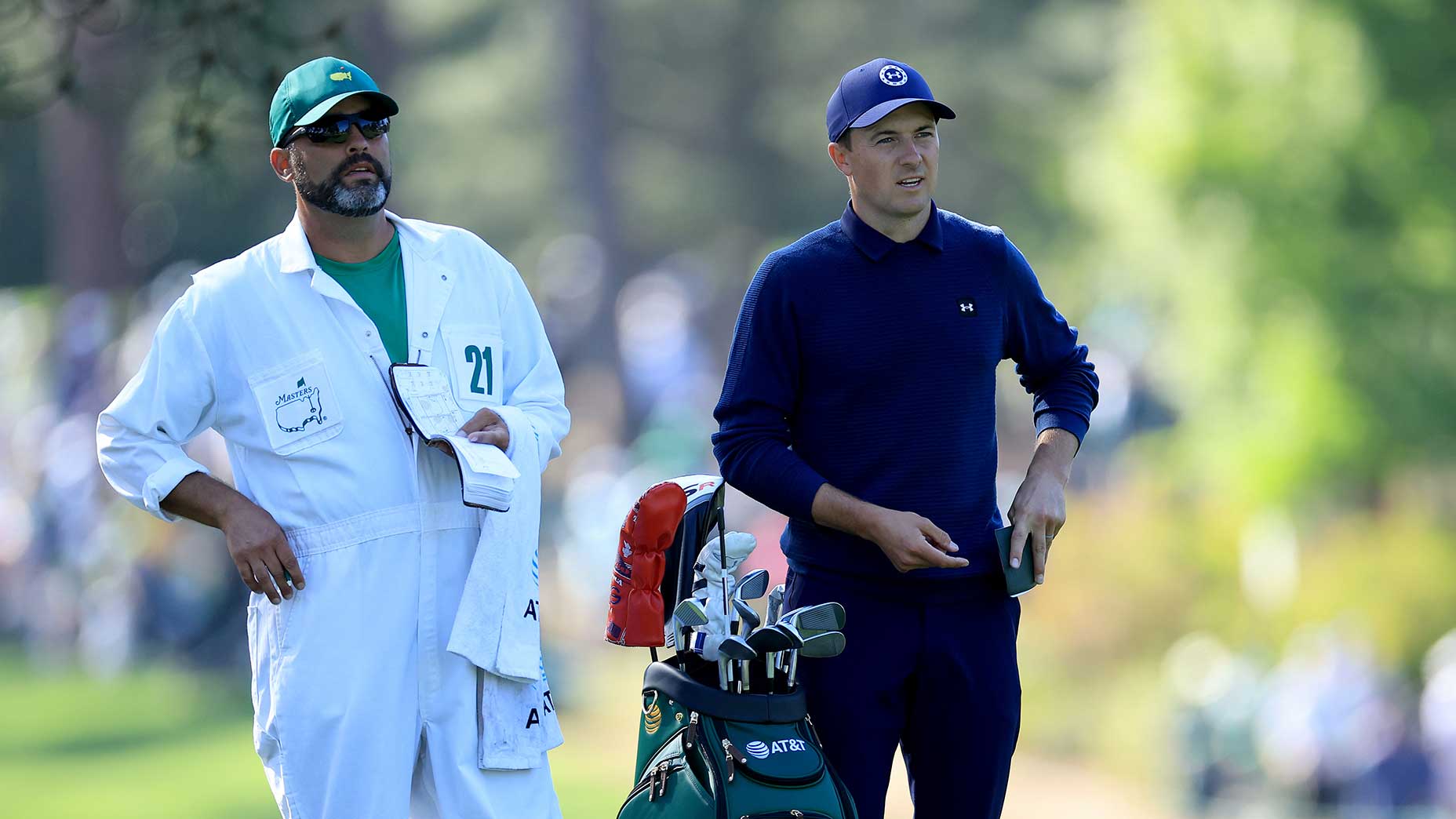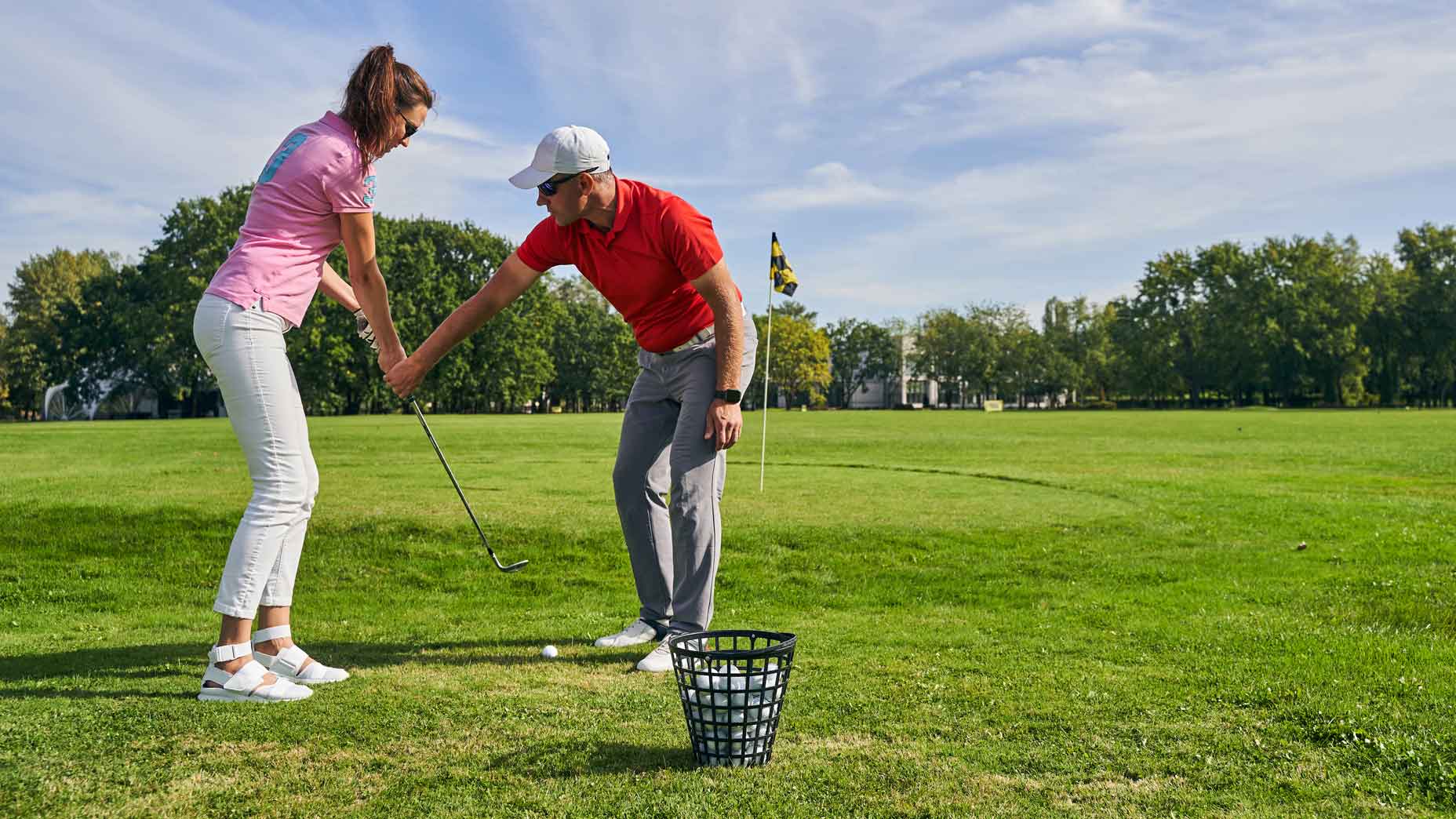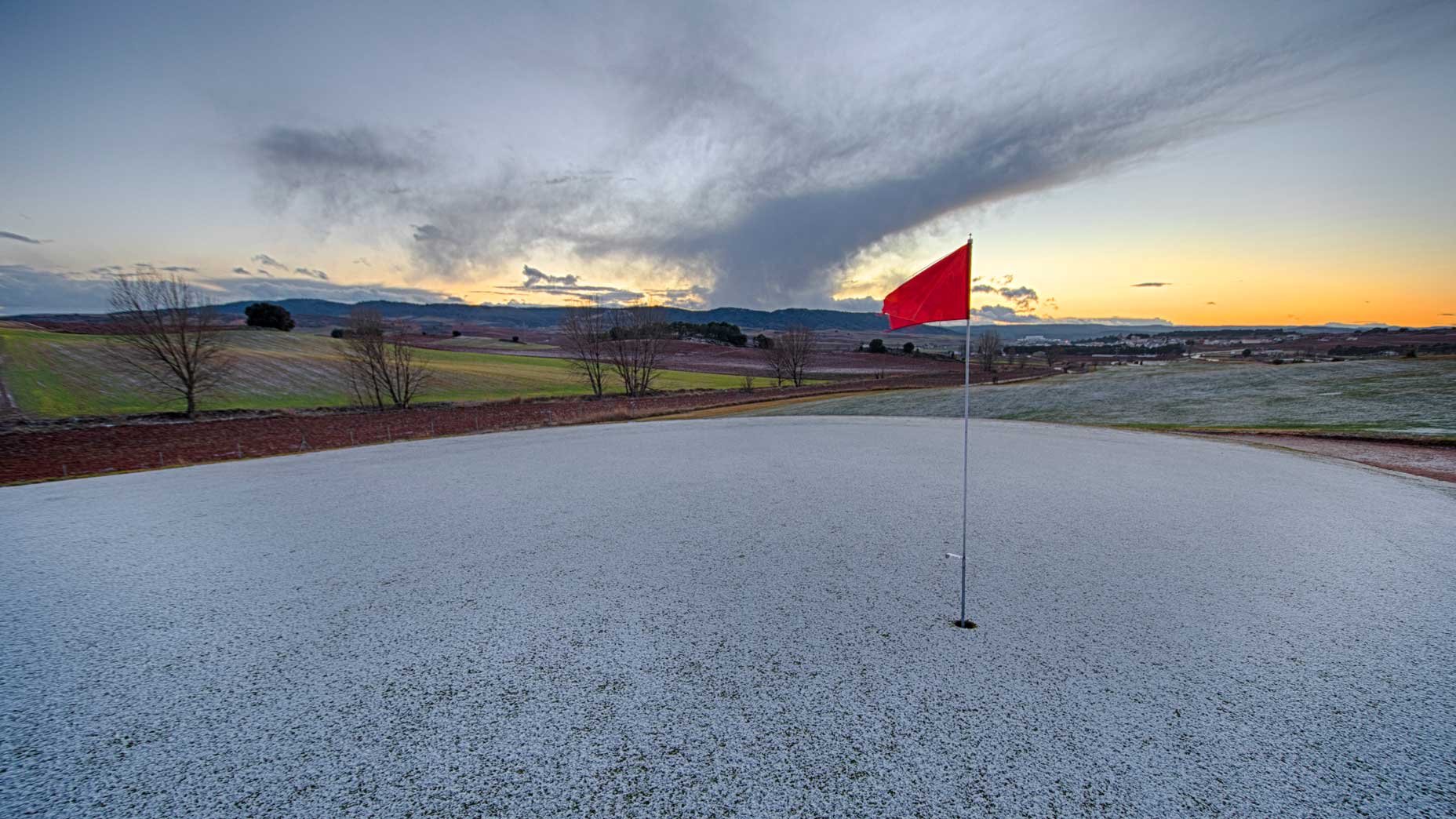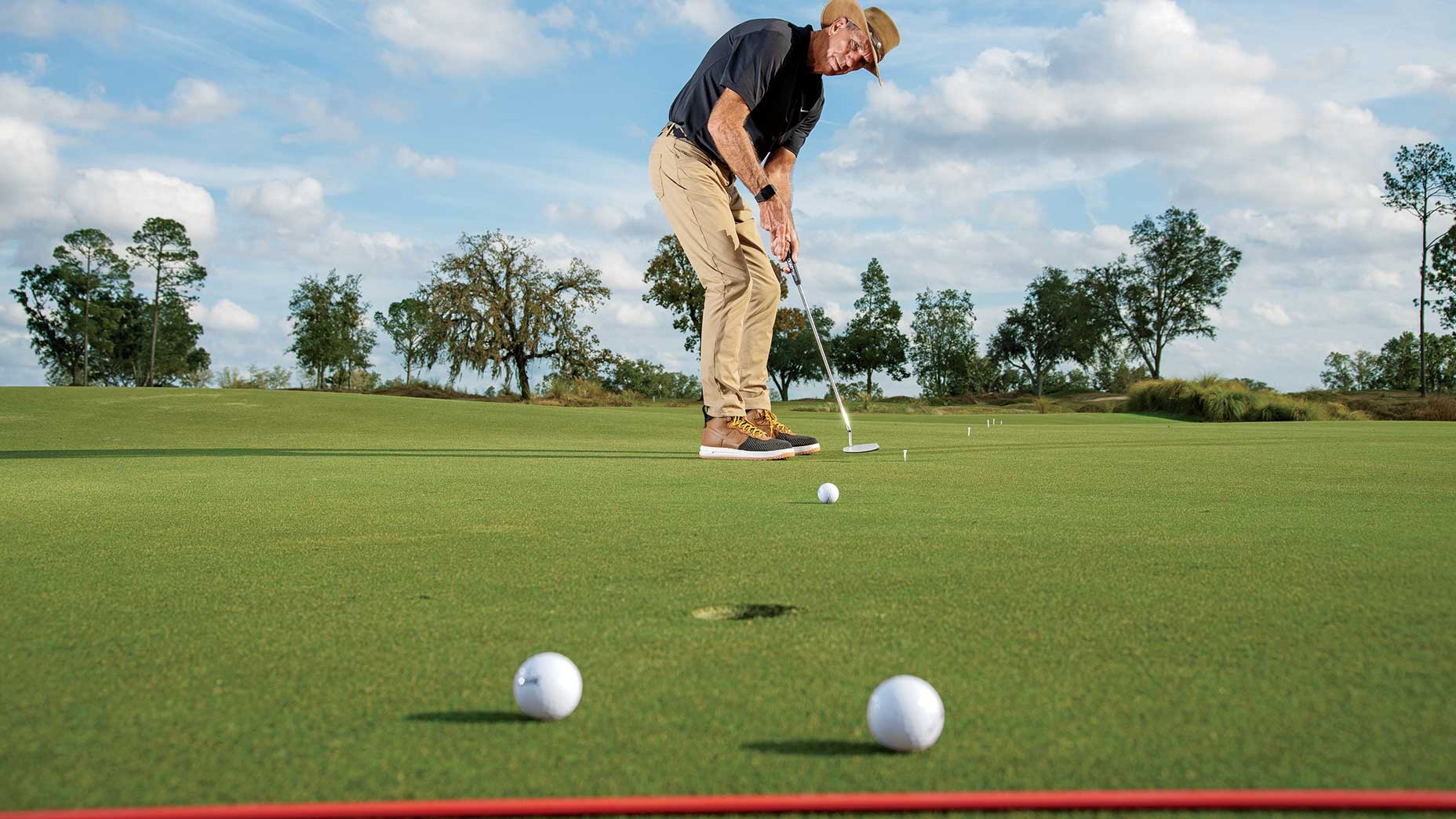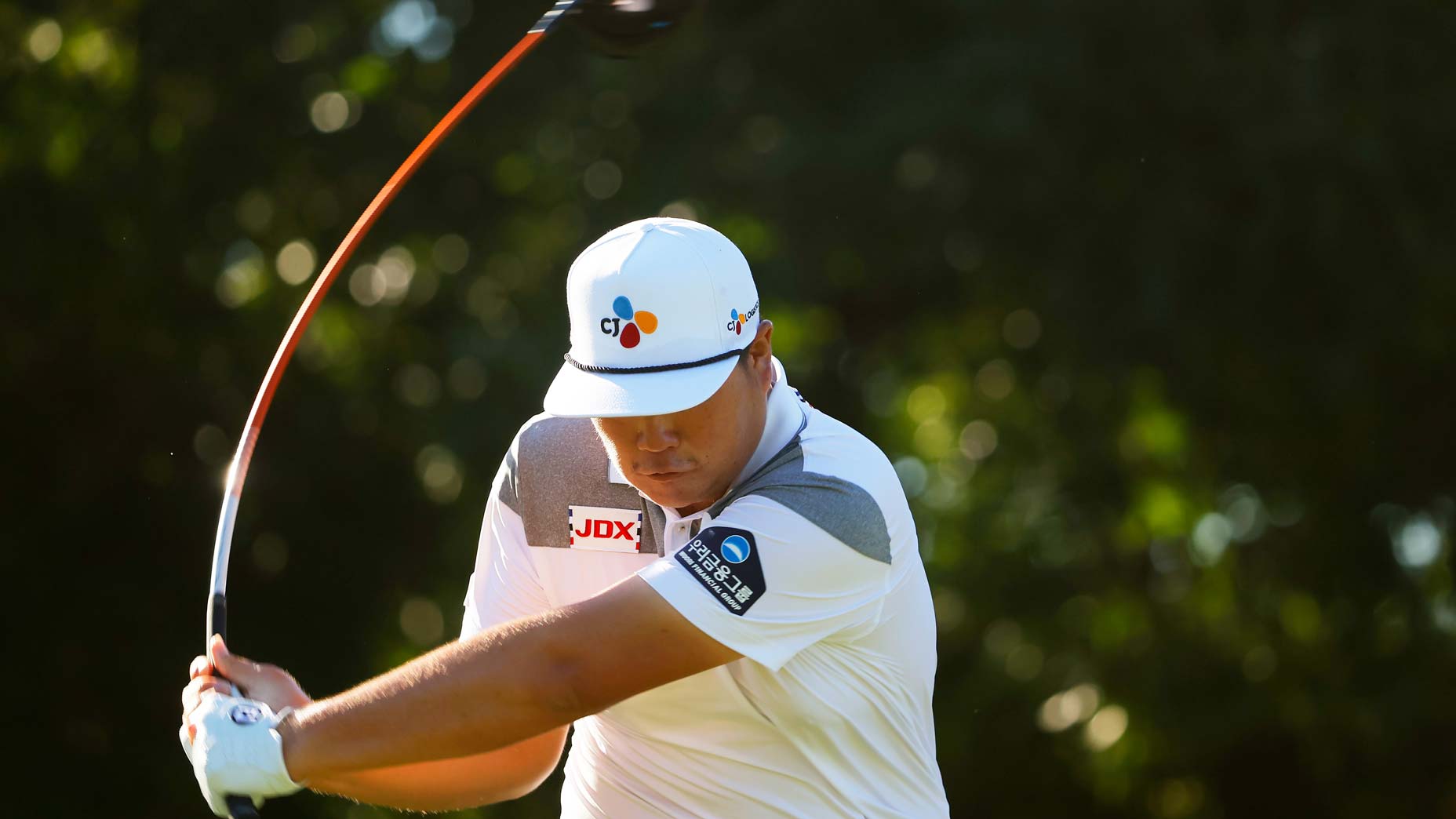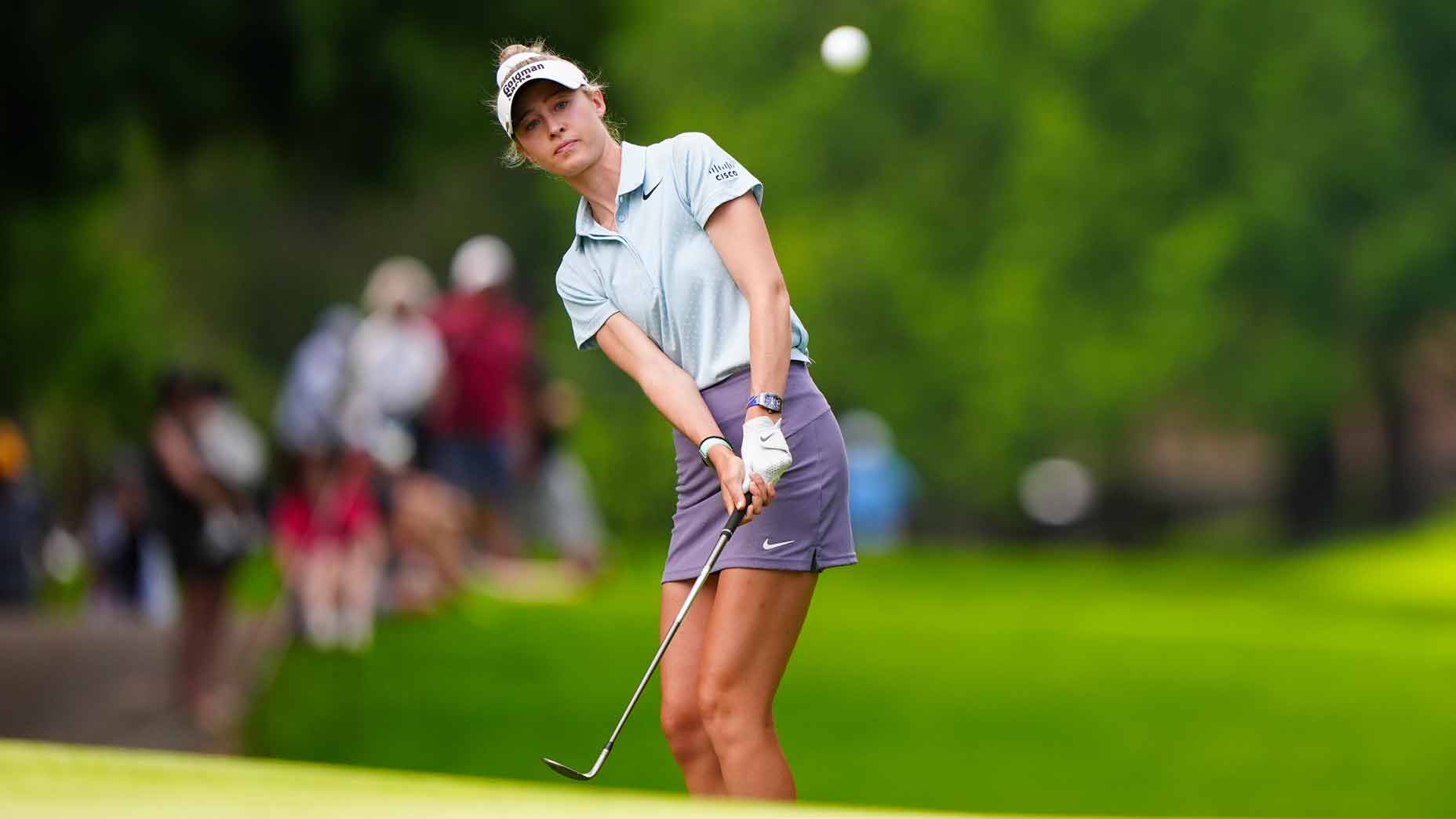A great, solid drive is a lot of fun — and extremely effective. It makes the rest of the hole easier. But to catch your tee shots flush, you need center-face contact.
Here are 10 ways to guarantee you’ll get that done.
1. Improve your posture
Good contact starts with good posture. It’s especially important on your drives when distance can be such a difference maker. Bend forward from your hips in a balanced, athletic stance, with your knees relaxed and your arms hanging directly below your shoulders. When you let your arms hang in this way, they will return naturally to this position as you come through the ball, without your having to rely on hand-eye coordination. Practice mirror or with video review, and soon you’ll be seeing more drives flying off the center of the clubface.
2. Proper grip
This might sound like a boring fundamental, but your grip has a profound influence on your swing path as well as on the position of your clubface at impact, both of which are key to catching it square. A common misperception I see among amateurs is that the thumb of the lead hand should run straight down the center of the grip. In most cases, this is incorrect.

Your lead hand (the left hand for a righty) should be placed onto the grip as your arm hangs naturally, with your thumb positioned slightly right of center. You should be able to see the pointer and middle-finger knuckles of your lead hand, just as you do when your arms hang naturally.
3. Forward ball position
With the driver, proper ball position is forward ball position. This will allow you to contact the ball on the upswing while allowing time for the clubface to square. To find this position, start in your proper posture with your feet together and the club centered between your feet. With your lead foot (the left foot for a righty) take a small step — almost as small a step as possible — widening your stance ever so slightly. Next, take a larger widening step with your back foot, making adjustments so that the ball is just off your left instep.

4. Shoulders tilted, not open
When the ball is positioned forward correctly, your shoulders should be titled, with your lead shoulder slightly higher than your trail shoulder. This tilt will help you make contact on an ascending angle. As you tilt your shoulders, it’s important to keep them parallel to your aiming line. Too often, when golfers tilt their shoulders, they also twist them, so that the lead shoulder is pulled back, open to the target line. From that open position, it’s more difficult to hit the center of the face.
5. Tee it high
Most golfers need to tee the ball higher than they think. I like to tee it high enough that you can catch the ball with the center of the face without the club head hitting the ground. A good rule of thumb is that approximately three-quarters of the ball should be above the top of the club head at address.
How teeing the ball higher can help you drive it longerBy: Luke Kerr-Dineen
If you pop up your drive, don’t assume that it is the result of having tee the ball too high. More often, the culprit is a downswing that is either too steep or too slow. If you break a lot of tees, there’s a good chance you’re coming in too steeply. It’s okay to hit the tee on occasion. But you want to hit your drives with a sweeping motion, which results from proper ball position and shoulder till.
6. Know your spacing
You should maintain the same posture and forward hip bend with every club from your shortest to your longest. This can be accomplished by changing your distance from the ball for each club. Stand closer to the ball with shorter clubs and farther away with longer clubs. After you’ve set your club to the ball, position yourself by inching your feet forward or backward until you are in the correct posture that will allow you to deliver the center of the clubface to the ball.
Every golfer’s ideal posture will be sightly different, depending upon their body type and shaft lengths — and it requires practice to find it! For me personally, I know I’m in position when I can fit roughly one open hand between my hands on the grip and my thighs. However you measure your own position, the key is being able to replicate it with every club. If you’re too crowded, your contact will tend to be more toward the heel; if you’re too far away from the ball, your contact will tend to be more on the toe.
7. Stay balanced
Not just at address. Throughout your entire swing, from takeaway to finish. If you lose your balance at any point, your physical relationship to the ball changes, which in turn changes the contact point, making it difficult to be consistent. Good posture throughout the swing is something you can work on. One way is to practice by balancing on one foot at a time, holding your position. Swinging with your feet together is another effective method. Also, work on holding your finish until you see your ball land.
This drill will improve your swing path and produce more solid contactBy: Mark Hackett, Top 100 Teacher
8. Proper swing path
This starts with your setup, with a proper grip and good posture. It also helps to practice keeping your underarms relatively close to your body in your downswing. This will allow the club to approach the ball correctly with the face lined up for contact at the sweet spot.
9. Get fit
No two swings are alike. To get the most out of yours, you need a club that matches. Length, loft, weighting, and shaft stiffness are all important factors in a fitting. If your club hosts demo days, I recommend attending, as the reps who show you up are expert in their trade. To test an even wider range of options, I suggest visiting your nearest TrueSpec (TrueSpec and GOLF.com are affiliates of 8AM Golf), where you can try out an array of heads and shafts and in every combination. Bring your own driver to see how it compares. All the shots are measured on a launch monitor, which eliminates the guess work. It may be that you can’t find anything better than your current driver. I’ve seen that happen with some of my students. But it’s a rarity.
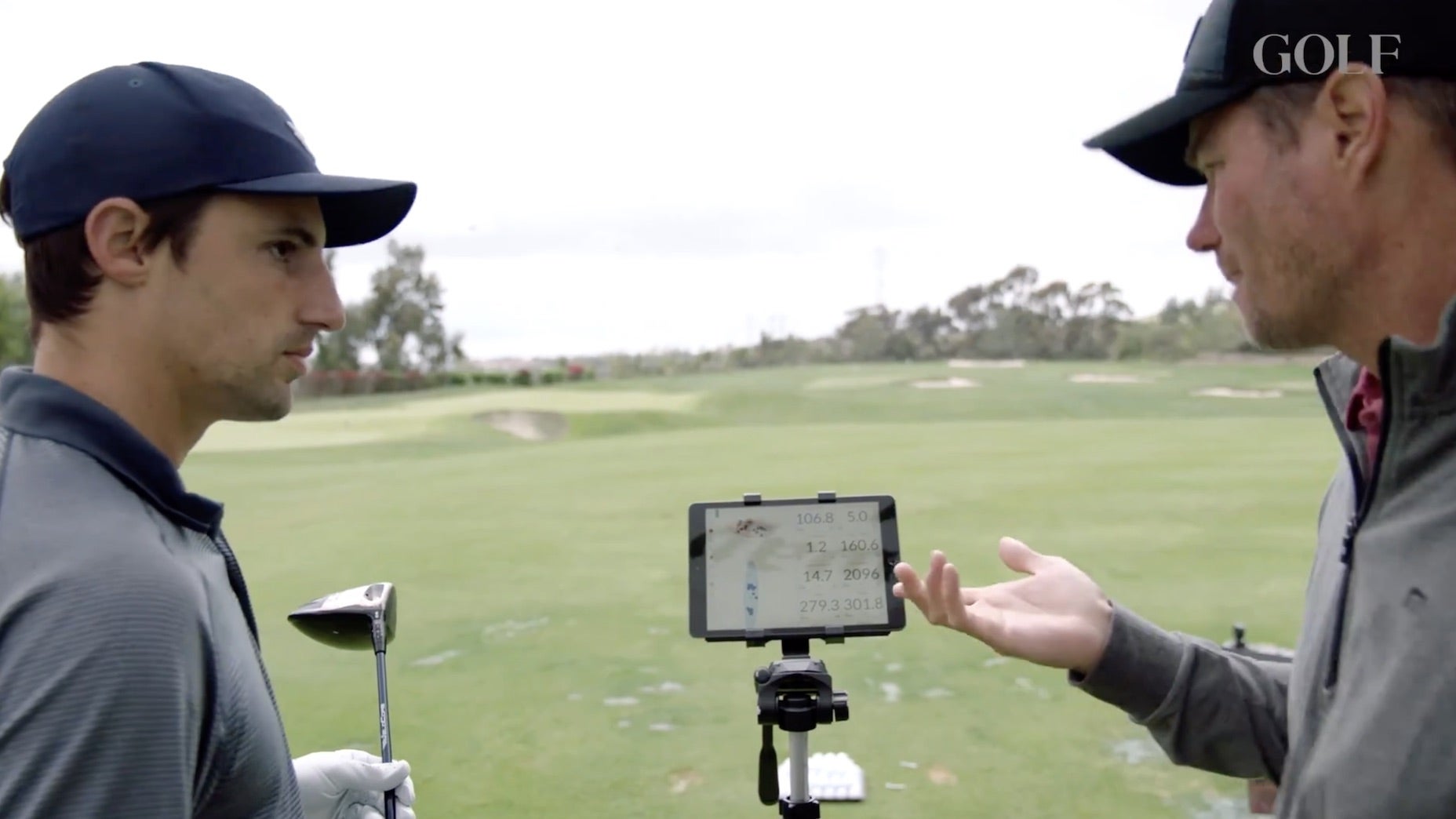
10. Three tee drill and foot spray
Instant feedback is invaluable as you make adjustments. One of my favorite ways to get it is with foot spray. Coat the clubface before you hit, and you’ll see exactly where you’re making contact. Think of it as the moment of truth.
I also like to practice with three tees: one under the ball, and one on each side of the ball. If you hit the outside tee, you are like making contact toward the heel. If you hit the inside tee, you’re probably catching the ball on the two of the club. Use this feedback to adjust your swing path. It’s a surefire path to greater consistency.

